Back in the middle of April I had the opportunity to visit a Greater Prairie Chicken lek on Konza Prairie. This was my second time reserving a spot in the blind at Konza and hopefully it won’t be my last. My first visit to see the greater prairie chickens on Konza was fantastic and we had some great weather conditions. The weather on this trip wasn’t as nice with heavy rains over the weekend. We weren’t sure if we were even going to be able to go out to the blinds since storms were forecast for that morning (the group scheduled the day before us had to be cancelled due to the weather). Luckily the storms held off and we were able to go.
We were in the blind before sunrise and we could hear the male prairie chickens booming before we could see them. We had heavy cloud cover at sunrise which wasn’t the best for photography, it was dark and we had flat light at first, but it was still a great morning.
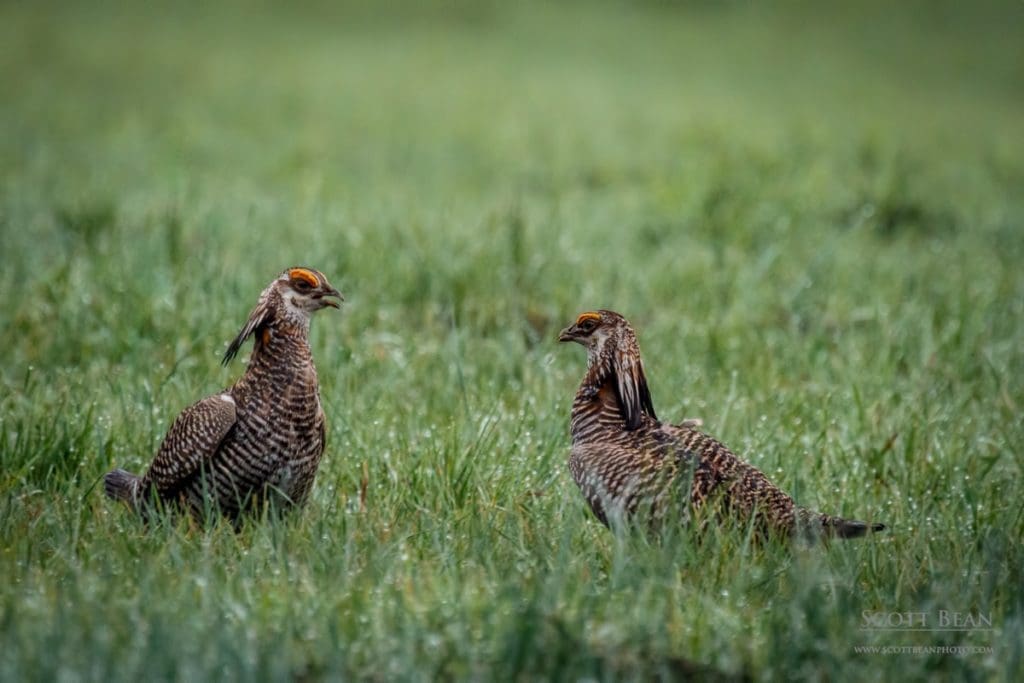
I can’t remember for sure, but I think we had 12-14 males show up on the lek. No females made an appearance but that didn’t stop the males from putting on a show. The males spread out across the lek with 1 lone male close to the blind, then a group of 3 males a bit further out and the remaining birds quite a distance behind. The 3 males that were in the middle were apparently the dominant birds and were very aggressive towards each other. These 3 males were spread out parallel to the blind and the bird in the center was either the most dominant male or desperately wanted to be the most dominant. It seemed like this particular male spent all morning fighting with the males on either side of him. The males would approach each other and vocalize and then would often both hunker down in the grass. When they both went down into the grass you knew it was about time for the 2 birds to throw down!
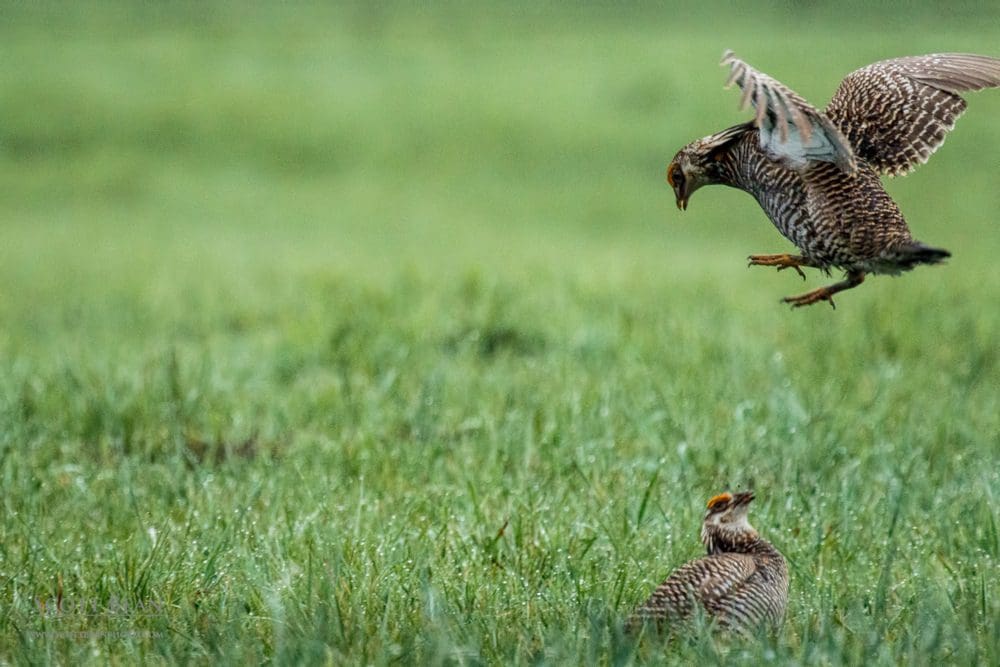
It seemed like most of the time, one of the males would charge the other, often jumping up in the air and coming down at the other with their feet extended.
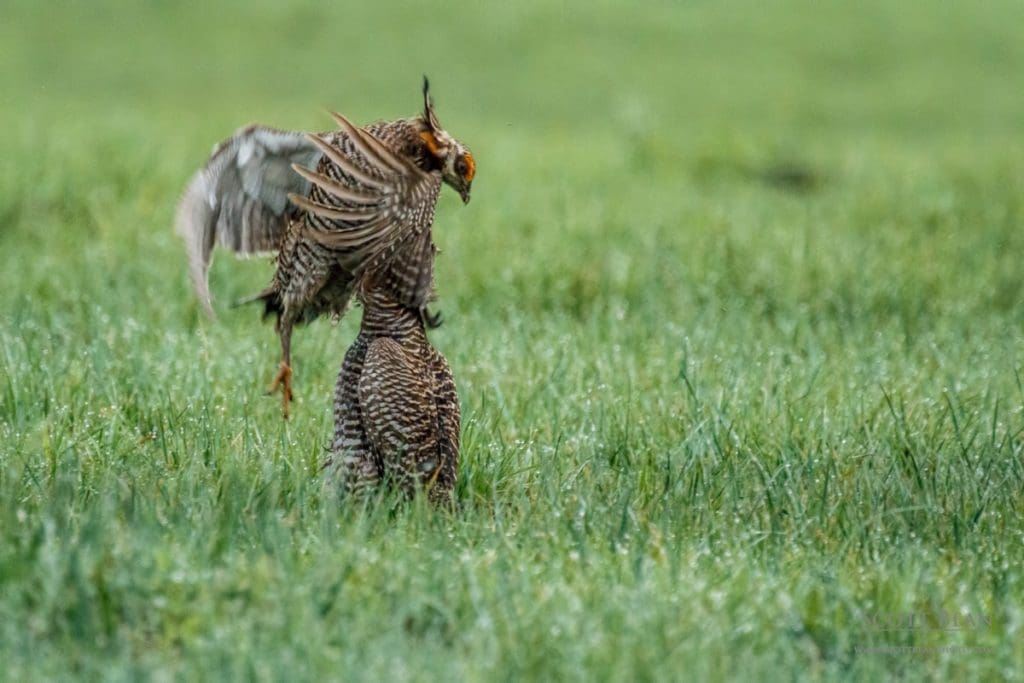

In some cases one bird would come down on top of the other male and in a few cases the birds actually rolled around in the grass with feathers flying.
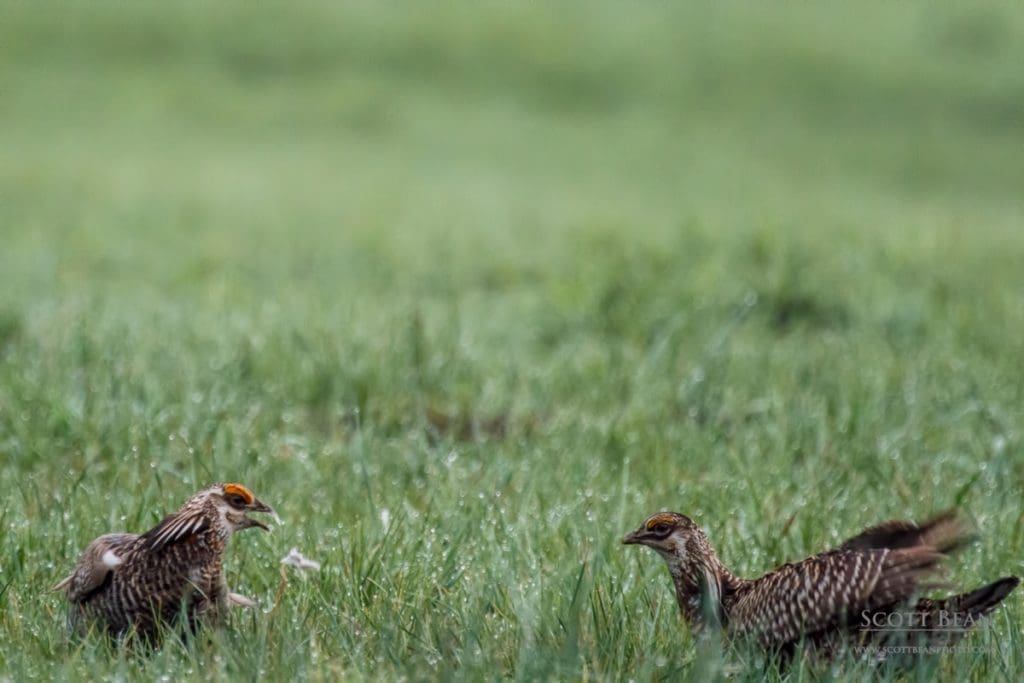
You can see feathers around the male on the left in the photo above.
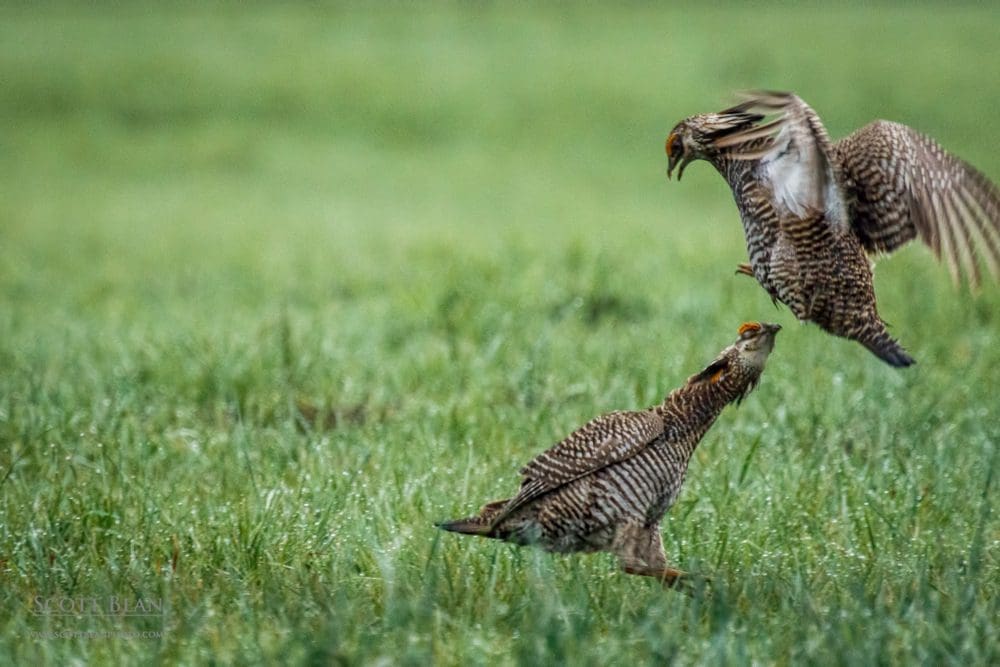
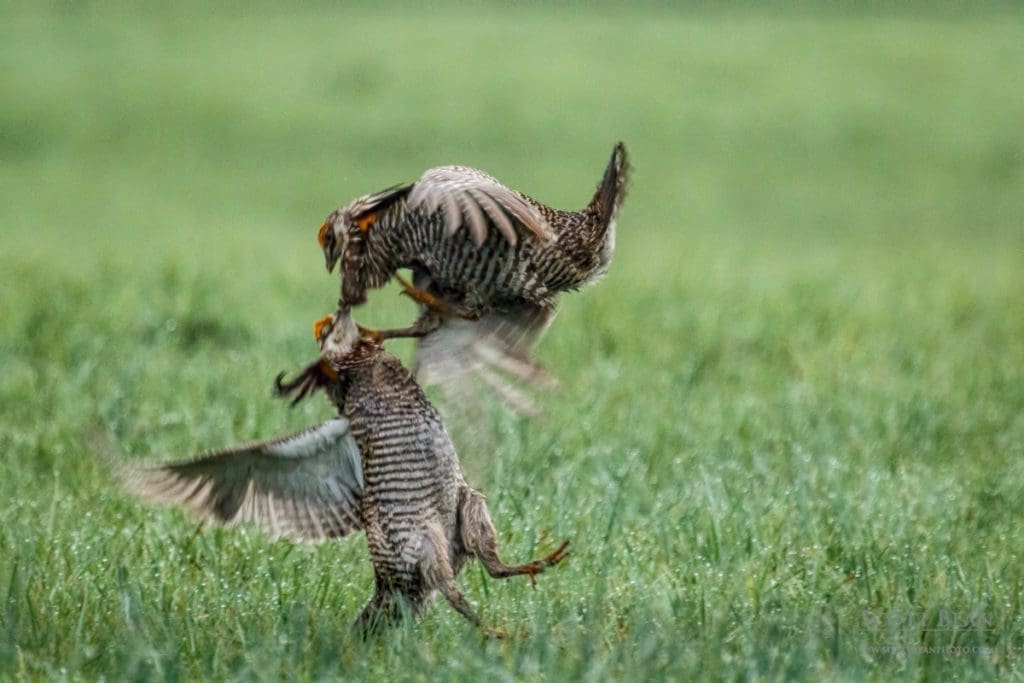
Other times you could see the males grabbing and pecking at each other as they collided.
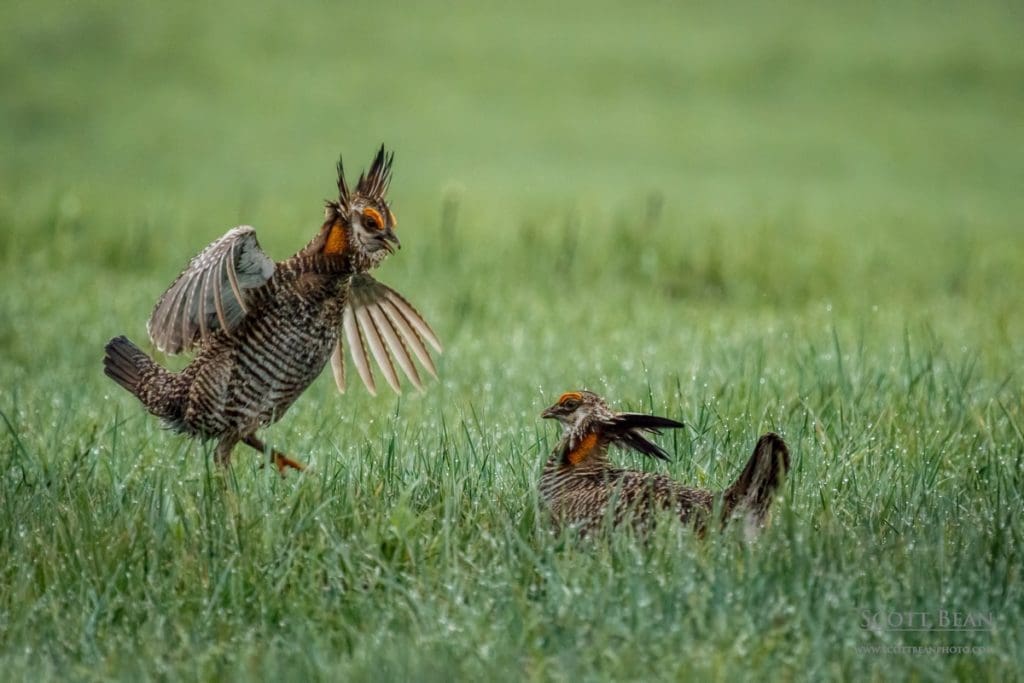
When these particular males weren’t fighting they spent a lot of time posturing and trying to intimidate each other. The displays and the fighting were fascinating to watch. It is amazing how well some birds can control their bodies and the birds were deceptively fast…these “fights” lasted only a couple of seconds for the most part. While it was interesting to watch and provided some great photo ops, these aggressive behaviors had to be stressful for the birds. If nothing else the males were expending a lot of calories. Nature is nature, but seeing things like this really brings home how loss of habitat, food, shelter, etc. can impact wild animals. The right habitat, food, and shelter would make a huge difference for these males later in the day I would think.
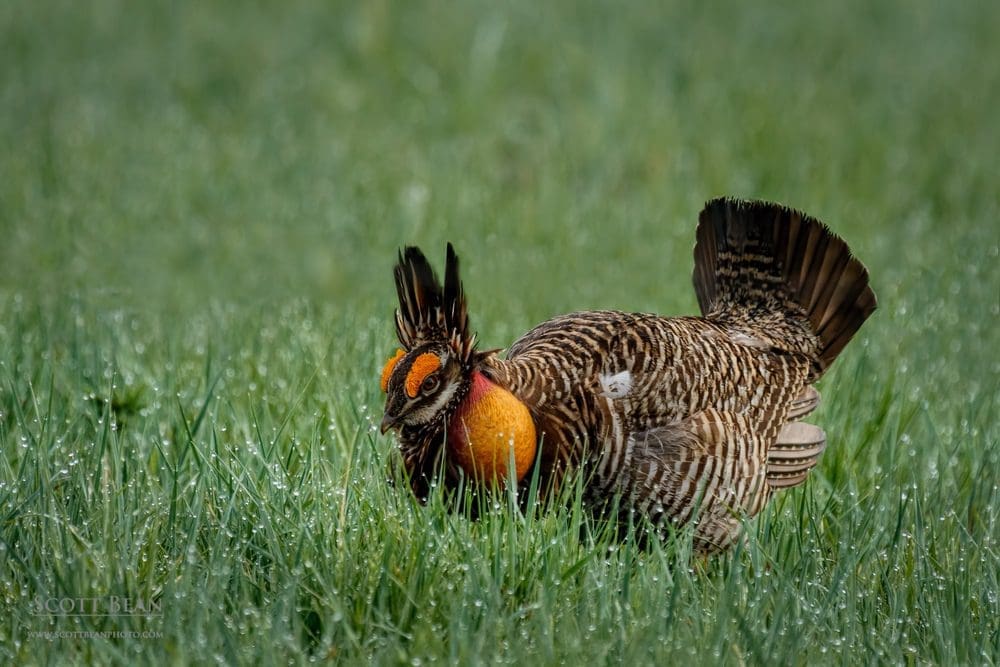
While conditions around sunrise were a bit dark and gloomy, later in the morning the sun came out and gave us some light to work with. The male that was closest to the blind never did get involved in the altercations with any of the other males, despite being relatively close to the 3 really aggressive birds. This male just seemed to be relaxing on the prairie and would occasionally boom and dance a bit and then just settle down in the grass. Being so close to the blind though, he provided some great photo ops. I know I’m anthropomorphizing here which some people don’t like, but this male seemed like a bird that knew his place and there wasn’t much reason to get too energetic about things. Maybe an older, wiser male? Let the youngsters get all excited and do the fighting.
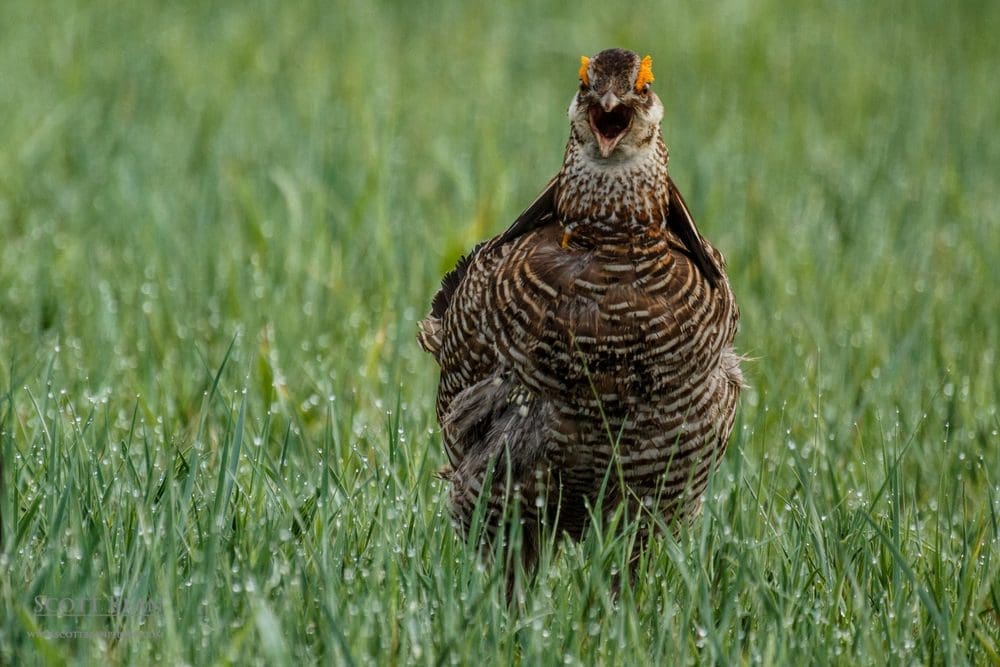
Right before we left for the morning however, this male seemed to realize we were in the blind and started really hollering and it seemed like it was hollering at us. So maybe an older wiser, but grumpy, male? I guess if I had been dancing around and didn’t think anyone was watching me and then found out people were watching me, I would probably be yelling too! (Actually I would probably just run away horribly embarrassed).
Watching this spring ritual really was an outstanding experience and I’m very grateful for the people at Konza Prairie that make this happen. If you have a chance to visit a prairie chicken lek I would highly recommend that you do it. It is a very fascinating display of animal behavior. Prairie chicken numbers are on the decline for a number of reasons. I really hope we can stop this loss; it is a shame that we are losing or about to lose so many animals and all the fascinating aspects they add to the world. A thriving natural world can enrich our lives so much if we just let it.
There is still time to visit the display at the Flint Hills Discovery Center “Save the Last Dance” which is a fantastic exhibit on prairie chickens. The exhibit will be there until May 17th.
As always, if you enjoy these photos please check out similar photos in my wildlife gallery. If you would like to be updated when I post new blogs, make announcements of events, print sales, etc, please sign up for my email list. Thanks for stopping by!
